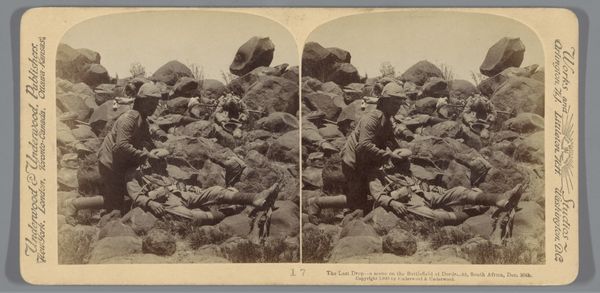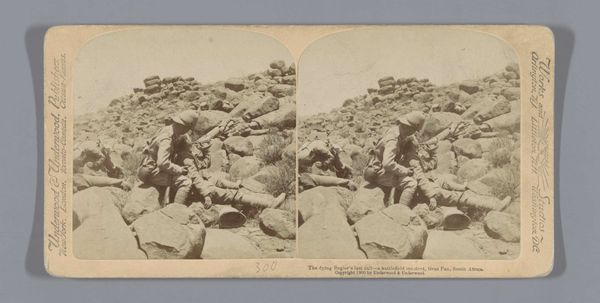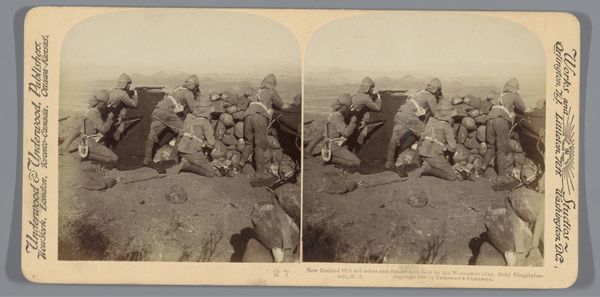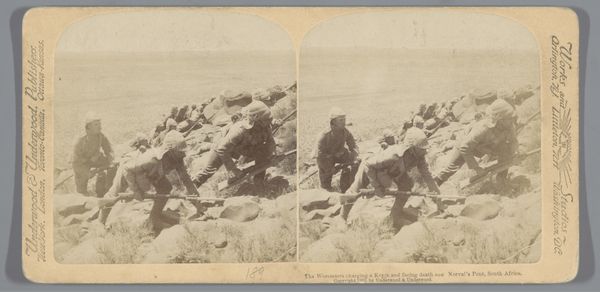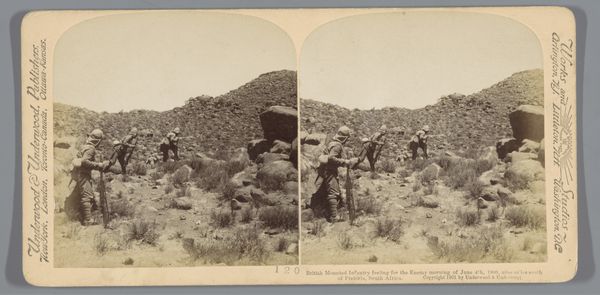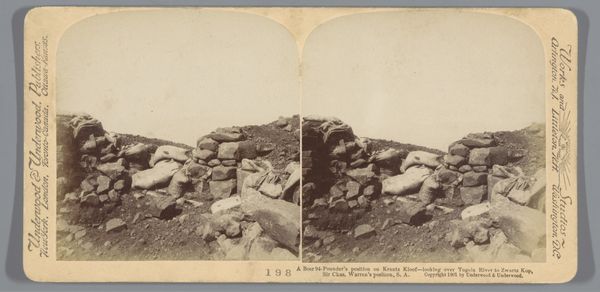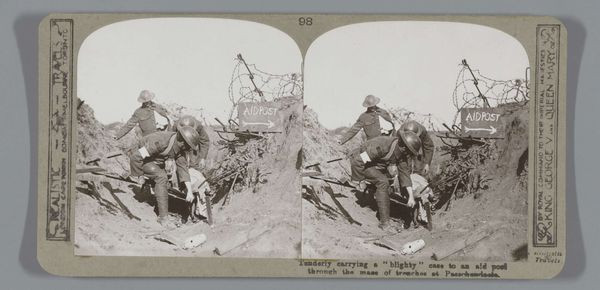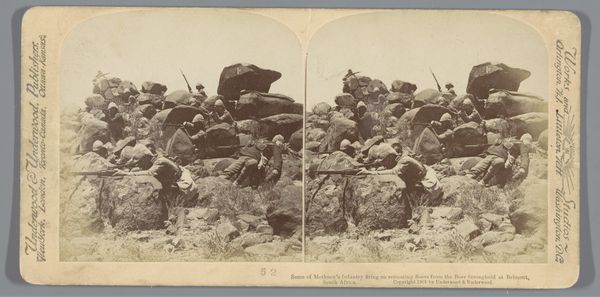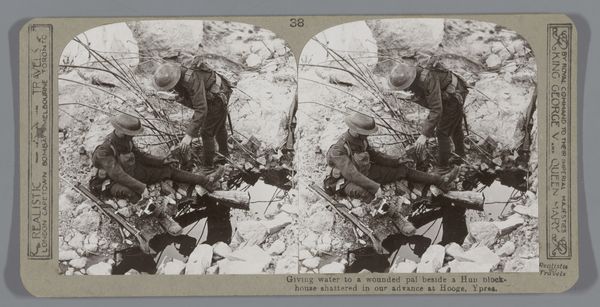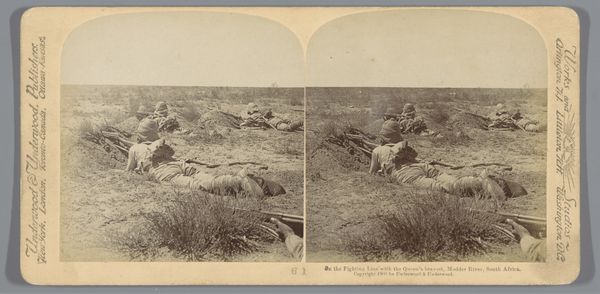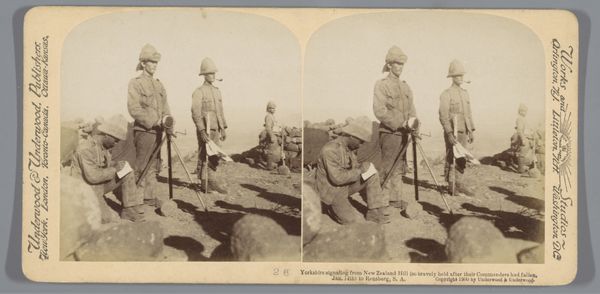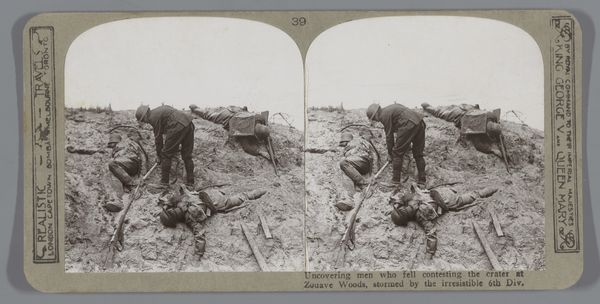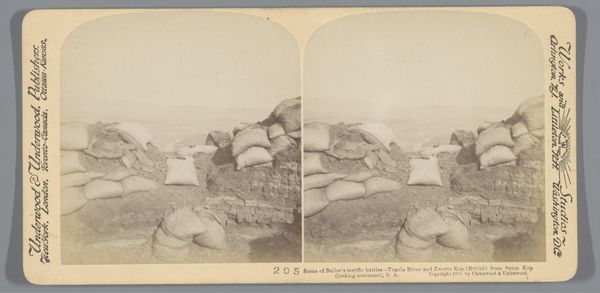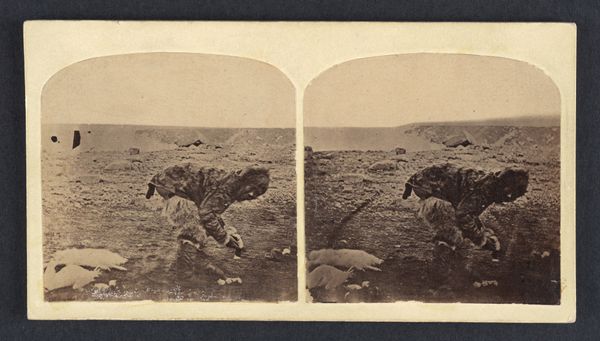
Voorstelling van een gevecht tussen Britse soldaten en Boeren op een heuvel bij Wepener, Zuid-Afrika 1901
0:00
0:00
print, photography, gelatin-silver-print
# print
#
landscape
#
photography
#
gelatin-silver-print
#
genre-painting
#
realism
Dimensions: height 88 mm, width 178 mm
Copyright: Rijks Museum: Open Domain
Curator: This gelatin-silver print, attributed to an anonymous artist, is titled "Representation of a fight between British soldiers and Boers on a hill near Wepener, South Africa." It dates back to 1901. Editor: It feels gritty, doesn't it? That stark sepia tone emphasizes the roughness of the terrain. Notice the tight composition, bodies obscured by rocks and rising ground. A scene full of muted action and conflict. Curator: The image documents a specific historical moment within the Second Boer War. The British soldiers with their helmets and uniforms carry connotations of empire, contrasted against what we know about the Boers defending their land. The visual echoes of figures half hidden, seeking cover, create a striking iconography of guerilla warfare. Editor: Indeed. I'm drawn to the repeating geometric shapes created by the rocks and how they dominate the space. The artist uses them to both obscure and highlight the figures within the landscape, fragmenting our focus. Even without understanding the specifics, that use of texture communicates struggle and instability. Curator: Consider the symbols that emerge. A conflict occurring amidst natural rocks creates visual metaphor relating to a hard struggle on resistant earth. Each figure and their shadowed form create visual symbols for the participants. A kind of collective trauma etched into memory. Editor: True. Thinking formally, the photographer's manipulation of depth of field to create blurred foreground adds to the feeling of instability, placing viewers uncomfortably close to violence they only partially perceive. It makes the action feel urgent. Curator: And it asks, “Whose story is being told here?” That lens offers a perspective and invites viewers to question its own narrative within the image of the colonial conflict. The print becomes both historical document and potential political tool. Editor: A potent visual statement then. The structure reinforces the thematic uncertainty. The image resists resolution just as the conflict likely did. It’s a piece where form truly follows… disfunction. Curator: Ultimately it remains, a haunting symbol of a very specific, but sadly repeatable, historical event. It brings the war visually forward across time and its historical representation becomes cultural memory, and still impacts us today. Editor: An effective exercise in visual communication, for sure. It seems almost prescient to observe how those technical and formal properties converge to reflect a deep ambiguity.
Comments
No comments
Be the first to comment and join the conversation on the ultimate creative platform.
